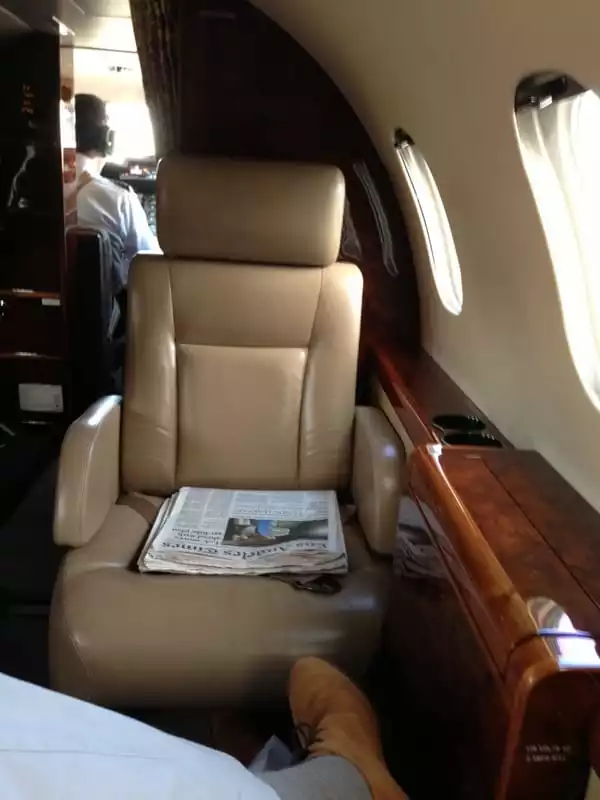The original premise of The Early Air Way back in November of 2007 was to sell empty legs, which for the most part were completely unused for anything. I was young and energetic, and believed I could harness empty legs to dramatically reduce the price of chartering a private jet (I thought I’d be selling flights for $1,000.00). At the time, roughly 30% of all private jet charter flights were flying with no people in the back. Now midway through 2012, I can safely say that the idea to build a private jet charter company strictly around the idea of empty legs was a flawed one. Today we use empty legs to save our clients significant sums of money on a daily basis, however offering them for $500.00, $1,000.00, etc. is not how we do that.
You can’t rely on the notion of getting a private jet for $500.00, $1,000.00, etc. I repeat, you can’t rely on the notion of getting a private jet for $500.00, $1,000.00, etc. Frankly, with current aviation technology, you never will be able to, no matter what some interesting articles will lead you to believe. Those articles are published because they’re interesting and catch audiences’ eyes! This, my friends, is the truth. Of course, there are always exceptions, which I will explain.
People will ask… “If the plane has to move, $1,000.00 is better than nothing, right?” Well, on paper this sounds good, but it is not that simple. To understand empty legs, you must first understand the private jet business. Although a multi-billion dollar national industry, the private jet charter industry is still very small and relatively niche. With that in mind, the industry reaches into greater geographic territory than the commercial airlines, offering access to an exponentially larger number of airports, all the while being a fraction of the size while having no fixed schedule. Our cards are spread thin. As a result of this, the empty legs we’re left with are pretty specific to the needs of the client who requested the flight leaving us with each empty leg. In other words, most of those empty legs are for flights that really no one will want, at times most people won’t want. Moving that airplane just a few miles to make the route match the empty leg clients’ requested city pairs immediately costs more in operating expenses than the $1,000.00 price tags people are reading about, the same with overnighting the crew a day to make the dates match, making sending the airplane home empty the more cost effective option.
What I’ve found to be the best use of empty legs is to find a “close match” to our clients’ one-way requests. For example, if a client wants to fly from Memphis, TN to Las Vegas, an empty leg from Jacksonville, FL to Santa Barbara, CA could offer a winning solution. Yes, we will have to pay to reposition the aircraft twice on each end, costing us a few thousand dollars. Yes, we may have to let the plane and crew sit in Florida another night to match the dates to our client’s request, costing us another couple thousand dollars. However, on a longer flight like this, even after the costs mentioned, you will still end up way ahead using an empty leg. The real goal here is to sell you the flight for the base hourly rate of the plane, without charging you for repositioning the aircraft (said costs would be absorbed if the empty leg is long enough). In the end, we’re not left with a jet charter that costs less than a First Class ticket, but we are left with a jet charter that can be as much as 50% less than what some other private jet providers are offering the same trip for.
Finally, those $500.00 / $1,000.00 trips you’ve read about do exist, but they are extremely rare on desirable routes, and you have to be extremely flexible in order to get them. To get those rock bottom below cost deals, the trip will have to be marketed to you, you’ll never find one by simply calling a provider for the flight, the reason for this is that the numbers are too low to solicit human labor to find them for you. Next, they will only be available at the very last minute (night before or day of travel), since by that point there is little chance the legs will be used for revenue flights. Finally, they will be for short flights on small planes, and you’ll never get to alter the flight times or departure/arrival airports simply because an alteration will cost the provider more than the cost of the flight itself. These deeply discounted empty legs should be treated as a thrill to try out a private jet for a small amount of money rather than a means of predictable transportation.
A real deep-discounted empty leg experience will involve a mad-dash to the airport, to fly to a place you may not want to go, and booking last minute commercial tickets to fly home (or renting a car); all fun if you just want to say you flew on a private jet! Longer distance empty legs however can be used to make a one-way trip normally costing $35,000.00 closer to $18,000.00-ish, this is where the real value for the seasoned private jet traveller is.
That, my friends, is the truth about empty legs.
